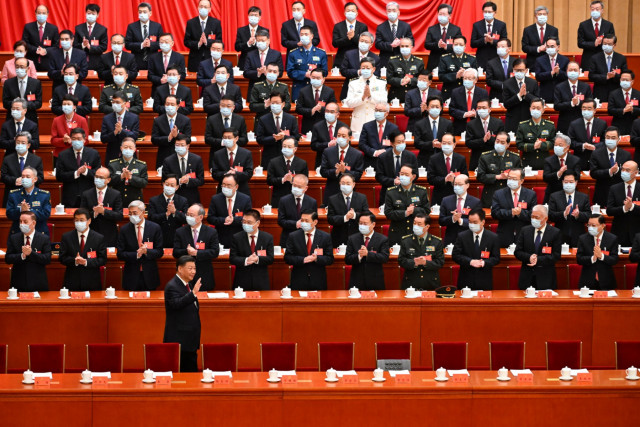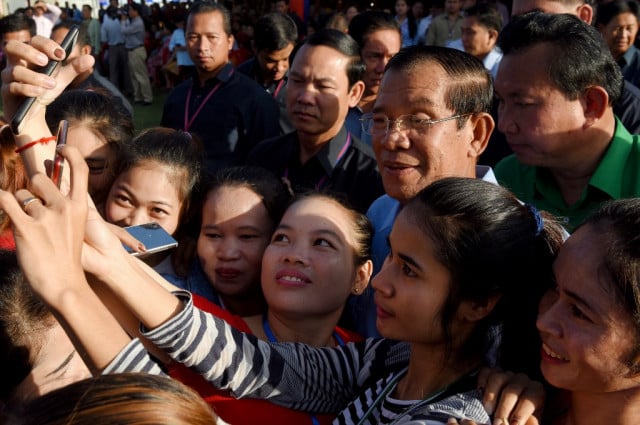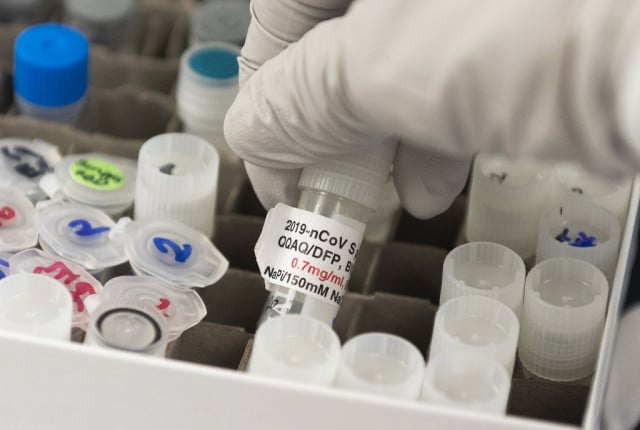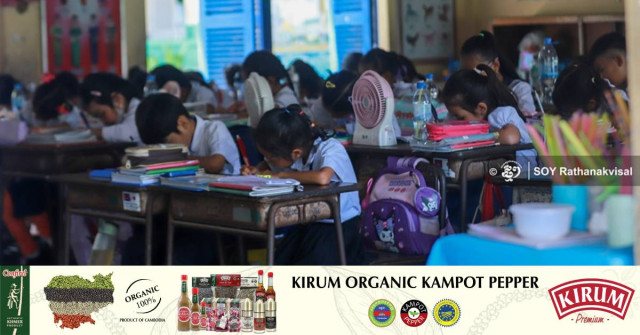Could the Khmer Currency “Riel” be Named After a Fish?

- By Leang Delux
- September 3, 2023 4:00 PM
PHNOM PENH — As history has shown, Cambodia and its administrations of hundreds of years ago have put a multitude of currencies in use. And each currency has its own story to tell.
Chea Serey, governor of the National Bank of Cambodia since 2023, took Leang Delux, co-founder of ThmeyThmey News and Cambodianess, on a tour of the Preah Srey ICANAVARMAN Museum (SOSORO Museum) in Phnom Penh to explore different aspects of the country’s currency.
As she explained, with Cambodia’s frequent use of U.S. dollars, the creation of the museum is also meant to encourage Cambodians to use and promote Khmer riels.
_1693710680.png)
Leang Delux: First of all, since many people often wonder, why do we have the name “riel” for our national currency?
Chea Serey: The origin of “riel” has never been actually determined. There are many hypotheses about this. However, the first use of this name can be seen on the piastre currency printed during the Indochinese era (in the late 19th and early 20th centuries) that was circulated in Cambodia, Vietnam and Laos. Another hypothesis revolves around Cambodia’s popular fermented dish, prahok, that uses a type of freshwater fish called “riel” (common dace) as an ingredient. When exposed to sunlight, the scales of the common dace reflect the color silver [and in Khmer, the word “prak” means both silver and money]. Because of this, we might have named our currency according to the color of the fish. However, we cannot know whether it is true or not. Another hypothesis suggests that the name was influenced by Spanish tradesmen in centuries past. Countries in the Middle East such Yemen and Qatar, as well as Brazil in South America have similar names for currencies. At the end of the day, the truth is still to be determined.
_1693710735.png)
Leang Delux: How can you make the history of our currency interesting and easy for the general public to grasp?
Chea Serey: This museum reflects the efforts made by the National Bank of Cambodia to provide people with more information on our currency. However, in spite of our research, the existing records that we have are quite limited. What is important is the understanding regarding the value of our currency and its relation to our sovereignty, our politics and economy.
_1693710793.png)
Leang Delux: What is the objective behind the creation of this museum?
Chea Serey: First of all, we want to promote our currency, the riel. Second, we want to put on display some of the historical aspects documented by our team at the National Bank of Cambodia. This is information about which the public is not or is insufficiently informed. Furthermore, when looking at the history of our country, most of the time we view it from a political perspective. Here, our approach, which is unique, is to view it instead from the economic perspective. When we invited the central banks of other countries to visit our museum, they applauded our concept. We took pride in this. Our work to create this institution goes back a decade before its official inauguration. We had to gather documents and, most importantly, install this ancient coin which is the only one—or perhaps two—in the world that was discovered so far.
_1693710990.png)
Leang Delux: What are some of the challenges of putting together a museum so that visitors will be amazed?
Chea Serey: It was of course a challenge. After the war, people did not pay much attention to the value of history. But it was fair since people were in need of basic necessities for survival. Whenever they find these coins underground, they don’t think much about them. They may melt them down or sell them somewhere. We lost a significant chunk of our historical assets because of this. At other times, they also sold them abroad. In the case of the pieces that we were able to trace, the owners of the pieces simply set the prices too high for us to purchase them. Because of the lack of objects to put on display, the Ministry of Culture and Fine Arts lent us some artefacts, such as jewelries of ancient times, which might have been used for commercial transactions.
_1693711026.png)
Leang Delux: In front of us here, we can see a replica of a coin minting machine from the era of King Ang Duong [who reigned from the 1840s to 1860]. The real one is kept in an outdoor section of the museum. How was it discovered?
Chea Serey: The machine was discovered in the former city of Oudong (a historical site around 45 kilometers north of Phnom Penh). As we can see in an image here, the machine was put under a tree. People often showed religious respect to the machine by offering incense sticks and flowers. Perhaps, without the local people worshiping this machine, the object might have been sold for scrap. The villagers did not really want to sell it to us since it was somewhat of a sacred object for them. We knew right away that it was a minting press since we have records telling us that King Ang Duong had purchased it from the English through Singapore. Combined with the knowledge of our experts, we could identify this minting machine.
_1693711063.png)
Leang Delux: What was the reason that prompted us to switch from piastre back to riel?
Chea Serey: Initially, we had never had our own official currency. During the reign of King Ang Duong and his predecessor, King Chey Chetta II [who reigned in the early 17th century], action to create an official currency was taken, yet it was short-lived. During the French colonial era, a common currency, the “piastre,” was put in circulation. This movement encouraged the people of that time to familiarize themselves with currency. However, the downside of using a common currency is the fact that it is linked to other countries’ economies. To make things even more complicated, the piastre was also linked to the franc (a former French currency). So, the implementation of the currency did not proceed well with its intended mechanism. After obtaining the country’s independence from France, King Norodom Sihanouk (1922-2012) established infrastructures such as the National Bank of Cambodia, which began operating in 1954. Then, the use of the Khmer riel spanned from 1955 to 1975. However, in the early 1970s, people were losing trust in the riel due to the war. The exchange rate was unreliable, and people were very unhappy.
_1693711202.png)
_1693711094.png)
Leang Delux: What is the relationship between currency and sovereignty?
Chea Serey: When a coin is minted, it bears the name of the king or the name of the city of that nation. Wherever that coin is used, the place should more or less belong to the king. The further away the currency is used, the larger the sovereignty. Moreover, when a country uses its own currency, the financial authority has more control over whether to value or devalue the money based on the needs of its economy. When using piastre, the currency and its economy was highly separated. The piastre was so valued because it was linked to the [French] franc. It is similar to the present day as we are now also using the U.S. dollar. When the U.S. dollar is high, our exports are also very expensive, making our products less competitive on the market.
_1693711446.png)
Conducted in Khmer for ThmeyThmey News, the interview was translated for Cambodianess by Ky Chamna.
Related stories: The Sosoro Museum: Where Learning about Cambodia’s History—through Money—Turns Exciting
This interview was posted in Khmer on ThmeyThmey Media YouTube channel on February 10, 2023.















